More than phones: how Nokia produced computers
Perhaps for you this is not news, but Nokia has not always been engaged in the release of mobile devices. The company has a rather rich and multifaceted history . Beginning with the production of paper products in 1865, the company in various periods was engaged, for example, in electric power, rubber products, electrical cables, electrical engineering, (!) Robotics, military developments and personal computers.
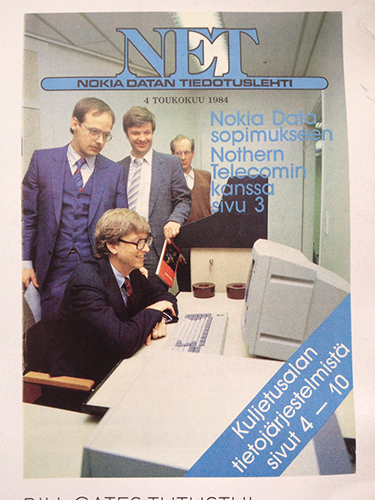
Speaking of the latter. Not so long ago, Mikko Hipponen , a renowned security specialist and columnist, tweeted the cover of Nokia’s thirty-year-old Nokia corporate magazine (dated September 4, 1984). It captures Bill Gates, whom you can remember from a variety of comedic commercials , at the time of visiting the headquarters of the Finnish company. He was invited to familiarize himself with the latest version of the MikroMikko personal computer, which at that time was a direct competitor to the IBM PC army. Who would have thought then ... Although let's leave such speeches to journalists and intercept the baton from kerenskiy with his post about Agat 9 telling you about computers proudly carrying the banner of Nokia on their plastic sides.
The eighties of the last century was undoubtedly the best time for home PCs. It was at this time that manufacturers and consumers in their minds finally got a picture of how a personal device should look for work and play. That is, computers are no longer perceived as highly specialized machines used in organizations and scientific laboratories, and have become something commonplace. This can be compared, for example, with how smartphones have now smoothly flowed into our lives.
')
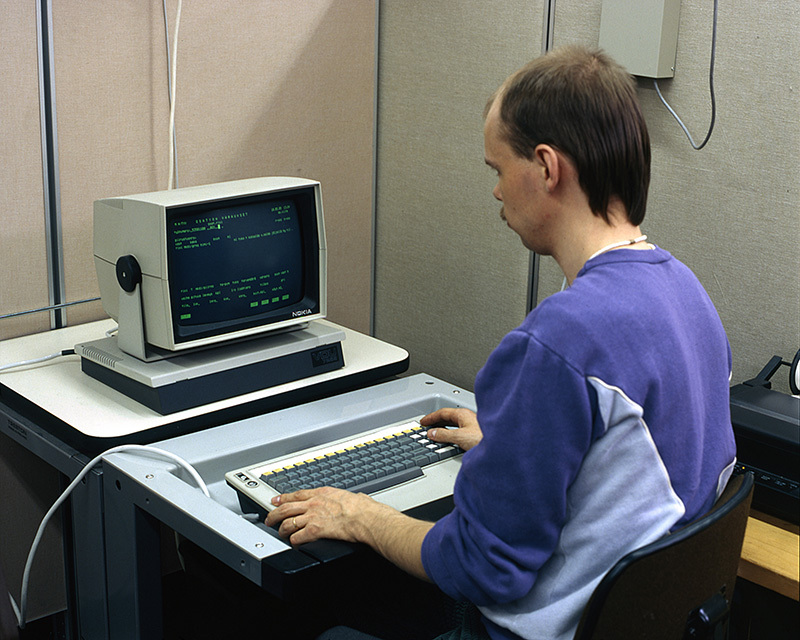
In 1981, IBM released their first IBM PC, based on the Intel 8088 processor, and almost simultaneously with it, Nokia’s computer division seeks to break into the business PC market with its first-born MikroMikko 1.
The first model in the lineup was introduced on September 29, 1981, exactly 48 days after the IBM premiere. The date of the presentation was timed to the name of Mikko in the Finnish calendar. Production was carried out at the plant in Espoo, where computer equipment was produced from the 60s.

Nokia MikroMikko 1 assy

The dark side of themoon Nokia MikroMikko 1
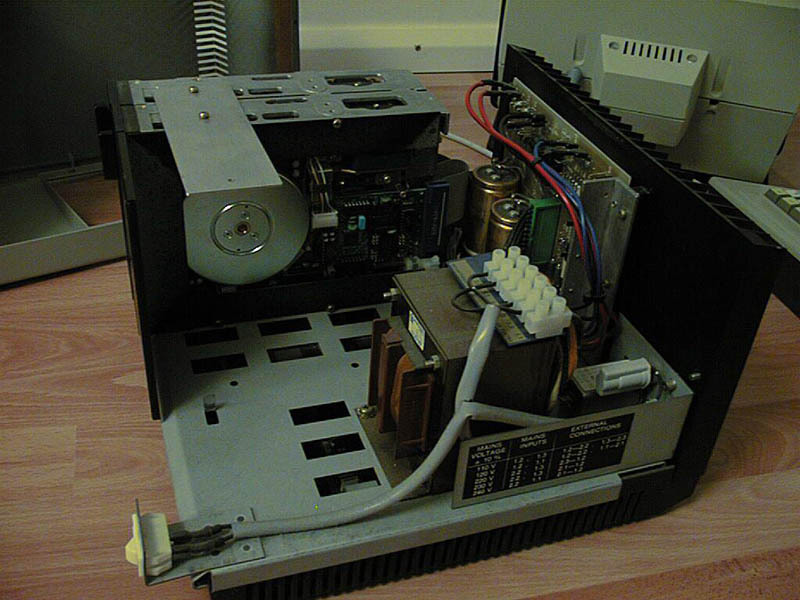
Insides
MikroMikko 1 received an Intel 8085 processor with a clock frequency of 2 MHz, 64 KB of RAM, a 4 KB ROM, and worked on the CP / M operating system.

Motherboard
The model had a lot of modifications. For example, the M6 modification (in the figure above) had two 5.25 "640 KB drives. However, other models could be equipped with one or two drives (360 KB or 640 KB), or even a 5 MB hard disk (modification M7).
It is terrible to think that the performance of the flagship smartphone Lumia 930 at that time could be considered a supercomputer, and its size and interface would most likely make the engineers crazy.


The display resolution was 800 x 327 pixels at a frequency of 50 Hz (the standard resolution was 160 x 75). He did not connect to the outlet, but received power from the main unit.
The computer was rather heavy: the weight of the keyboard alone approached two kilograms! But in general, it was a fairly reliable and durable machine that could be used in fairly harsh (by the standards of the time, of course) conditions, for example, in school classes.
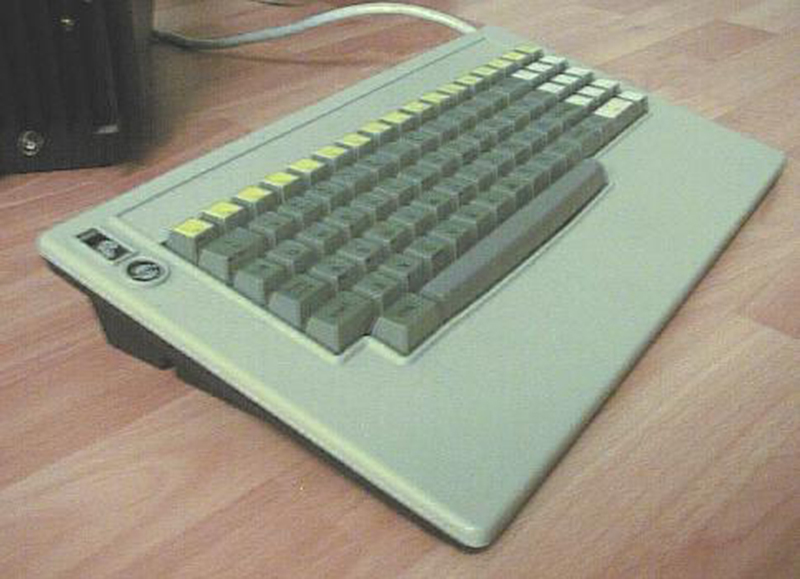
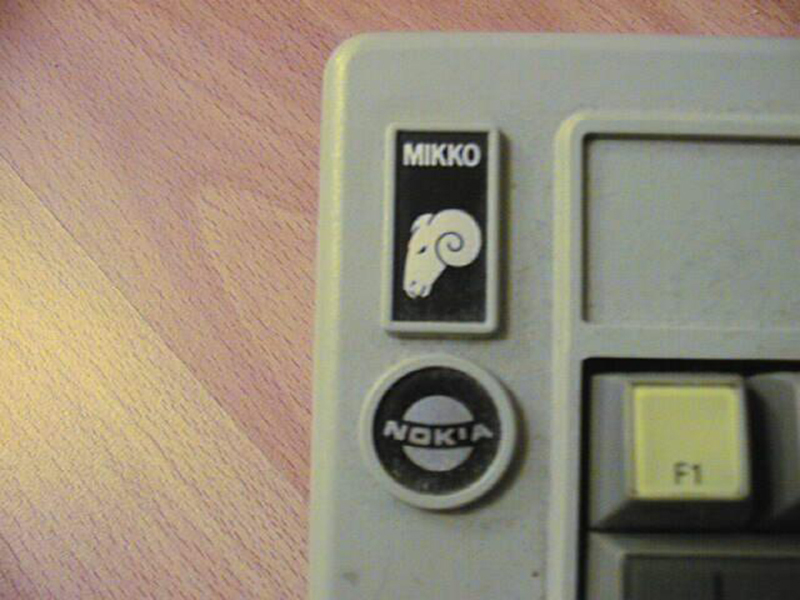
The Aries logo is a family trait of all MikroMikko models.
In general, all computers in the series, starting with the very first, were distinguished by good ergonomics. In this model, for example, the keyboard could boast of built-in wrist support and convenient keys.
MM1 had a linear power transformer. No fans were used in the system unit — cooling was carried out using a large heat sink on the rear panel.
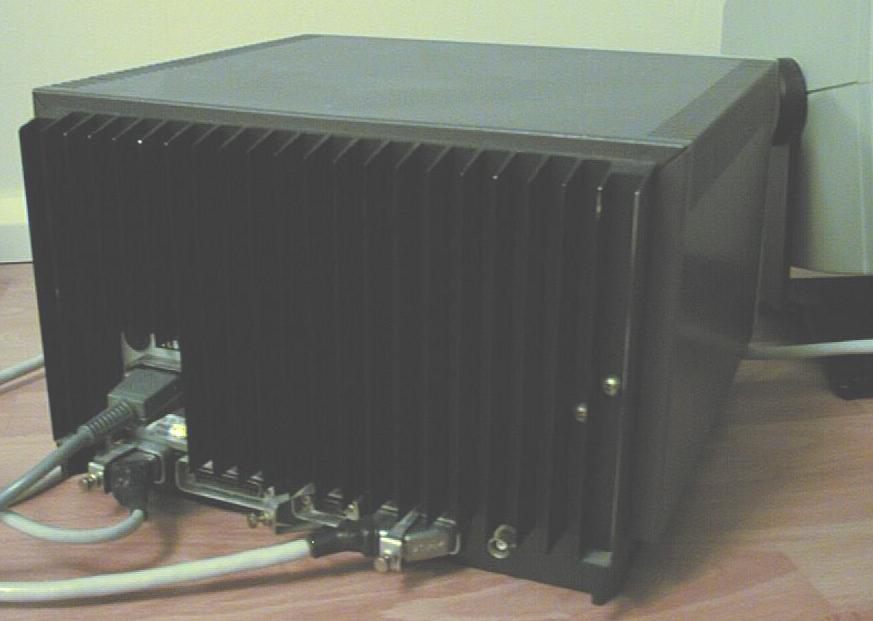
Heat panel
So that you could feel the spirit of that time even more, let's make a small remark. In the period between generations of MikroMakko, namely in 1982, the famous 64 from the American company Commodore entered the market. Due to its consumer qualities (we recall that the model was offered in the form factor of the set-top box, which could be connected to the TV as well) and the sales organization (if other computers were sold through authorized stores, the Commodore was sold even through toy stores) selling personal computers: from 1982 to 1994, more than 30 million copies were sold.
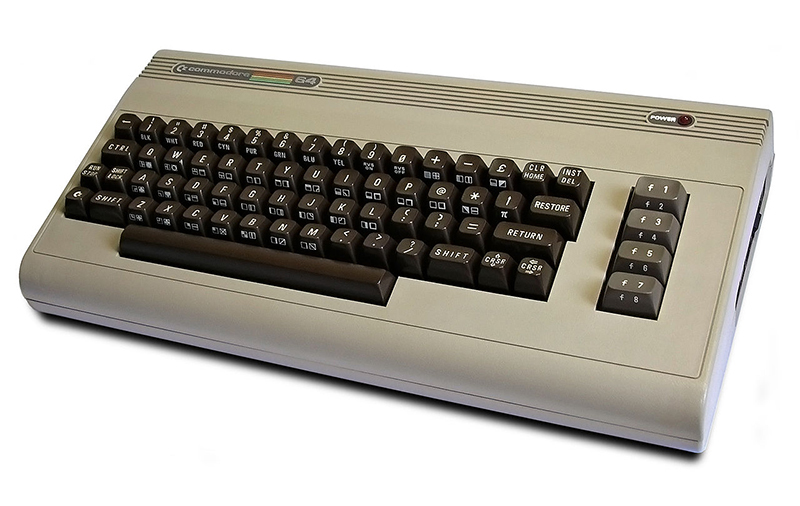
Commodore 64
But back to our sheep (good pun, is not it?). In 1983, the next generation comes out - MikroMakko 2. And, most likely, it was him who was then shown to Bill Gates. It received a high-quality monochrome Nokia MDU15 display with a white backing (the MM1 display was characterized by a combination of green symbols and a black background, characteristic of that time), with a resolution of 400 × 160 pixels at a frequency of 72 Hz.

Nokia MikroMakko 2 (aka Salora SPC 2)
Another thing is surprising: as stated by historians of computer technology, the MikroMikko 2 was the only mass-produced computer running on an Intel 80186 processor (!) With a clock frequency of 8 MHz. The computer was compatible with the increasingly popular MS-DOS at the time — Nokia used its MS-DOS 2.x version.
5 internal expansion slots (2 of which were used for the video card and storage controller, and 3 for RAM) opened up new possibilities for the configuration of the machine. And if in the first generation there were only 7 modifications, then MikroMikko 2 had 22 modifications. So the RAM could vary from 128 to 768 KB, and the hard disk could be 5 or 15 MB. Among other things, this machine could already be connected to a LAN standard of NETNET.
After MM2, the tree of Nokia personal computer models spread its branches much stronger. For example, the third generation of MikroMakko had three main branches, the first of which was MikroMikko 3, introduced in 1986. Powered by Intel 80286 with a clock frequency of 6 or 8 MHz, it was the first for a company completely IBM PC / AT compatible computer. For those who do not know, this means that the MM3 architecture was close to the third generation of the IBM PC, which allowed them to run their software directly, without using emulators. In this model, there were already 6 expansion slots, and for the first time a mouse was made to the keyboard company.

MikroMikko 3 TT
The following year, a workstation called MikroMikko 3 TT appeared. Her heart and brain was also the eight-megahertz 286th. In addition to it, the model received 1 MB of RAM, as well as one or two (depending on the version) 3.5 ”720 drives. Optionally installed hard disk of 20 MB. The default operating system was MS-DOS version 3.2.
This workstation has become one of the components in the computer workgroup systems called “Tiimi”, popular in the late eighties. It usually included servers based on MikroMikko 2 and 3 generation models and, in fact, MM3TT workstations. As for software, such complexes, at a minimum, had SQL / DMS data management systems and NOSS document management systems.
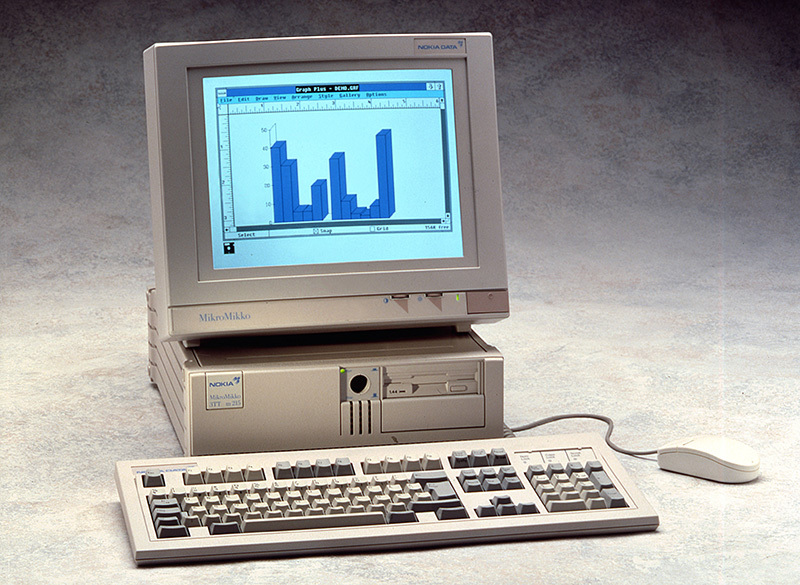
MikroMikko 3 TT M215
In the same year, the most powerful machine in this generation was released - MikroMikko 3 TT M215. Powered by MS-DOS 5.0, it boasted a 33 MHz Intel 80286 processor, 4 MB of RAM, 1.4 MB 3.5 "drive and 40 MB hard drive, which at that time was considered quite a top configuration.
In January 1988, Nokia’s computer manufacturing division acquired the computer division of Ericsson (Ericsson Data) and Dava, and changed its name to Nokia Data Systems. The company has become the largest manufacturer in the northern part of Europe (the seventh among all European countries). However, in 1991, in the wake of the economic crisis and due to an internal reassessment of company values (Nokia decides to concentrate on telecommunication technologies), the computer division was sold to the British company International Computers Limited. The ICL itself was subsequently purchased by Fujitsu of Japan, and the MikroMikko line of computers was called ErgoPro.
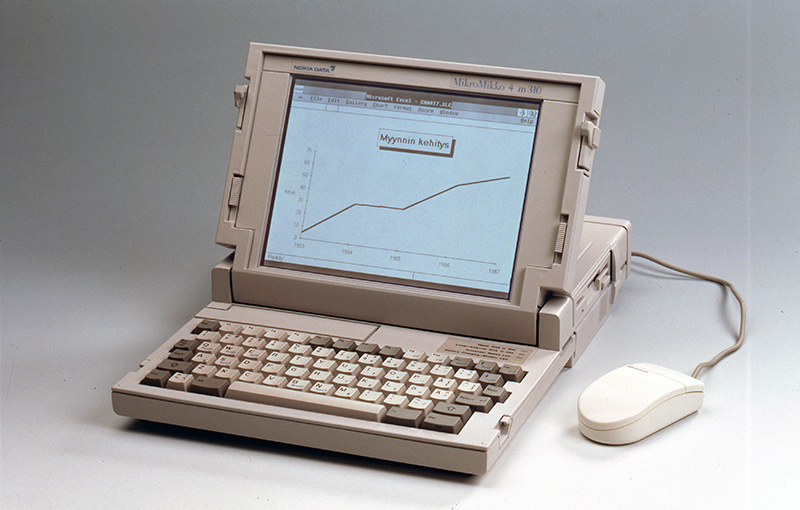
Nokia Data MikroMikko 4 m310 Laptop
However, several years earlier before the above events, the fourth generation of cars MikroMikko saw the light. Almost all of these computers were developed in Nokia Data, but some of them already bore the ICL brand.
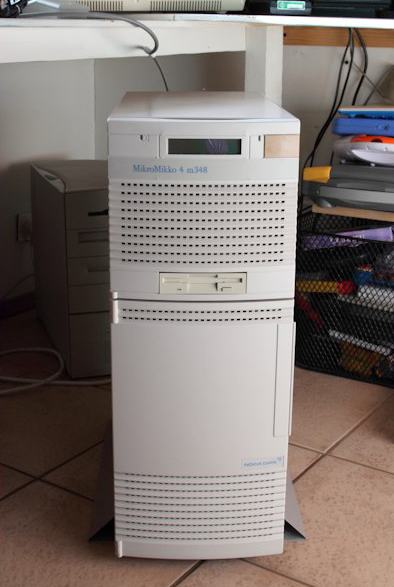
Nokia Data MikroMikko 4 m348
In order not to put you to sleep with the technical details of each of the modifications (and more than 9 of them were released), we say only that most of them were based on 386 processors, and only models like MikroMikko 4 m436SX / m458 received an Intel 80486 processor.
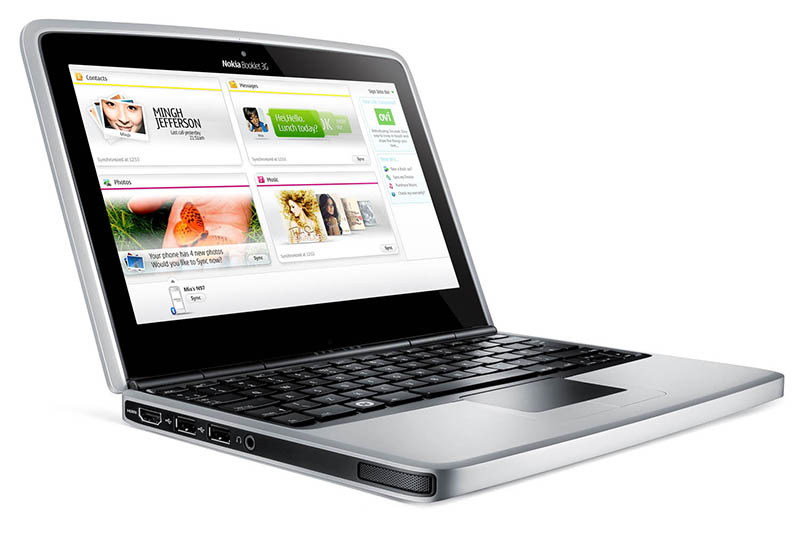
Nokia Booklet 3G
So ended the era of Nokia personal computers. More precisely interrupted by as much as 18 years, when Nokia returned to the market with its compact laptop (and in fact - a netbook) Nokia Booklet 3G, based on the Intel Atom Z530 processor with a clock frequency of 1.6 GHz. But that's another story ...

Speaking of the latter. Not so long ago, Mikko Hipponen , a renowned security specialist and columnist, tweeted the cover of Nokia’s thirty-year-old Nokia corporate magazine (dated September 4, 1984). It captures Bill Gates, whom you can remember from a variety of comedic commercials , at the time of visiting the headquarters of the Finnish company. He was invited to familiarize himself with the latest version of the MikroMikko personal computer, which at that time was a direct competitor to the IBM PC army. Who would have thought then ... Although let's leave such speeches to journalists and intercept the baton from kerenskiy with his post about Agat 9 telling you about computers proudly carrying the banner of Nokia on their plastic sides.
The eighties of the last century was undoubtedly the best time for home PCs. It was at this time that manufacturers and consumers in their minds finally got a picture of how a personal device should look for work and play. That is, computers are no longer perceived as highly specialized machines used in organizations and scientific laboratories, and have become something commonplace. This can be compared, for example, with how smartphones have now smoothly flowed into our lives.
')

In 1981, IBM released their first IBM PC, based on the Intel 8088 processor, and almost simultaneously with it, Nokia’s computer division seeks to break into the business PC market with its first-born MikroMikko 1.
The first model in the lineup was introduced on September 29, 1981, exactly 48 days after the IBM premiere. The date of the presentation was timed to the name of Mikko in the Finnish calendar. Production was carried out at the plant in Espoo, where computer equipment was produced from the 60s.

Nokia MikroMikko 1 assy

The dark side of the

Insides
MikroMikko 1 received an Intel 8085 processor with a clock frequency of 2 MHz, 64 KB of RAM, a 4 KB ROM, and worked on the CP / M operating system.

Motherboard
The model had a lot of modifications. For example, the M6 modification (in the figure above) had two 5.25 "640 KB drives. However, other models could be equipped with one or two drives (360 KB or 640 KB), or even a 5 MB hard disk (modification M7).
It is terrible to think that the performance of the flagship smartphone Lumia 930 at that time could be considered a supercomputer, and its size and interface would most likely make the engineers crazy.


The display resolution was 800 x 327 pixels at a frequency of 50 Hz (the standard resolution was 160 x 75). He did not connect to the outlet, but received power from the main unit.
The computer was rather heavy: the weight of the keyboard alone approached two kilograms! But in general, it was a fairly reliable and durable machine that could be used in fairly harsh (by the standards of the time, of course) conditions, for example, in school classes.


The Aries logo is a family trait of all MikroMikko models.
In general, all computers in the series, starting with the very first, were distinguished by good ergonomics. In this model, for example, the keyboard could boast of built-in wrist support and convenient keys.
MM1 had a linear power transformer. No fans were used in the system unit — cooling was carried out using a large heat sink on the rear panel.

Heat panel
Specifications of Nokia MikroMikko 1
Processor: Intel 8085 (2 MHz);
64 KB RAM, 4 KB ROM;
Text mode: 24 lines of 80 characters each, 25 lines for status information;
Resolution: 160 x 75 and 800 x 327 dots;
Display: monochrome, 12 inches;
Sound: beeper;
Memory: 2 5.25 "drives (640 KB) (modification M6), 5 MB hard drive (standard for modification M7, optional for all other modifications);
Ports: 2 RS-232 connectors, display, printer, keyboard;
Operating system and software: Nokia CP / M 2.2, Microsoft Basic, editor, debugger, assembler;
Dimensions and weight: 324 x 340 x 215 mm / 13.4 kg (main unit); 345 x 330 x 335 mm / 12 inches / 8.5 kg (display), 390 x 220 x 70 mm / 2 kg (keyboard);
Cost: approximately 30,000 Finnish marks as of 1984 (Who will find, with which it is possible to compare its value, please write in the comment).
64 KB RAM, 4 KB ROM;
Text mode: 24 lines of 80 characters each, 25 lines for status information;
Resolution: 160 x 75 and 800 x 327 dots;
Display: monochrome, 12 inches;
Sound: beeper;
Memory: 2 5.25 "drives (640 KB) (modification M6), 5 MB hard drive (standard for modification M7, optional for all other modifications);
Ports: 2 RS-232 connectors, display, printer, keyboard;
Operating system and software: Nokia CP / M 2.2, Microsoft Basic, editor, debugger, assembler;
Dimensions and weight: 324 x 340 x 215 mm / 13.4 kg (main unit); 345 x 330 x 335 mm / 12 inches / 8.5 kg (display), 390 x 220 x 70 mm / 2 kg (keyboard);
Cost: approximately 30,000 Finnish marks as of 1984 (Who will find, with which it is possible to compare its value, please write in the comment).
So that you could feel the spirit of that time even more, let's make a small remark. In the period between generations of MikroMakko, namely in 1982, the famous 64 from the American company Commodore entered the market. Due to its consumer qualities (we recall that the model was offered in the form factor of the set-top box, which could be connected to the TV as well) and the sales organization (if other computers were sold through authorized stores, the Commodore was sold even through toy stores) selling personal computers: from 1982 to 1994, more than 30 million copies were sold.

Commodore 64
But back to our sheep (good pun, is not it?). In 1983, the next generation comes out - MikroMakko 2. And, most likely, it was him who was then shown to Bill Gates. It received a high-quality monochrome Nokia MDU15 display with a white backing (the MM1 display was characterized by a combination of green symbols and a black background, characteristic of that time), with a resolution of 400 × 160 pixels at a frequency of 72 Hz.

Nokia MikroMakko 2 (aka Salora SPC 2)
Another thing is surprising: as stated by historians of computer technology, the MikroMikko 2 was the only mass-produced computer running on an Intel 80186 processor (!) With a clock frequency of 8 MHz. The computer was compatible with the increasingly popular MS-DOS at the time — Nokia used its MS-DOS 2.x version.
5 internal expansion slots (2 of which were used for the video card and storage controller, and 3 for RAM) opened up new possibilities for the configuration of the machine. And if in the first generation there were only 7 modifications, then MikroMikko 2 had 22 modifications. So the RAM could vary from 128 to 768 KB, and the hard disk could be 5 or 15 MB. Among other things, this machine could already be connected to a LAN standard of NETNET.
Specifications for Nokia MikroMikko 2
Processor: Intel 80186 (8 MHz);
RAM 128 to 768 KB;
Text mode: 24 lines of 80 characters each, 25-27 lines for status information;
Resolution: 400 × 160 pixels;
Display: Nokia MDU15 — monochrome, black and white;
Sound: beeper;
Memory: 5.25 "drives (320 or 640 KB), 5 MB or 15 MB hard disk;
Ports: display, printer, keyboard, NETNET;
Operating system: Nokia MS-DOS 2.xx.
RAM 128 to 768 KB;
Text mode: 24 lines of 80 characters each, 25-27 lines for status information;
Resolution: 400 × 160 pixels;
Display: Nokia MDU15 — monochrome, black and white;
Sound: beeper;
Memory: 5.25 "drives (320 or 640 KB), 5 MB or 15 MB hard disk;
Ports: display, printer, keyboard, NETNET;
Operating system: Nokia MS-DOS 2.xx.
After MM2, the tree of Nokia personal computer models spread its branches much stronger. For example, the third generation of MikroMakko had three main branches, the first of which was MikroMikko 3, introduced in 1986. Powered by Intel 80286 with a clock frequency of 6 or 8 MHz, it was the first for a company completely IBM PC / AT compatible computer. For those who do not know, this means that the MM3 architecture was close to the third generation of the IBM PC, which allowed them to run their software directly, without using emulators. In this model, there were already 6 expansion slots, and for the first time a mouse was made to the keyboard company.

MikroMikko 3 TT
The following year, a workstation called MikroMikko 3 TT appeared. Her heart and brain was also the eight-megahertz 286th. In addition to it, the model received 1 MB of RAM, as well as one or two (depending on the version) 3.5 ”720 drives. Optionally installed hard disk of 20 MB. The default operating system was MS-DOS version 3.2.
This workstation has become one of the components in the computer workgroup systems called “Tiimi”, popular in the late eighties. It usually included servers based on MikroMikko 2 and 3 generation models and, in fact, MM3TT workstations. As for software, such complexes, at a minimum, had SQL / DMS data management systems and NOSS document management systems.

MikroMikko 3 TT M215
In the same year, the most powerful machine in this generation was released - MikroMikko 3 TT M215. Powered by MS-DOS 5.0, it boasted a 33 MHz Intel 80286 processor, 4 MB of RAM, 1.4 MB 3.5 "drive and 40 MB hard drive, which at that time was considered quite a top configuration.
In January 1988, Nokia’s computer manufacturing division acquired the computer division of Ericsson (Ericsson Data) and Dava, and changed its name to Nokia Data Systems. The company has become the largest manufacturer in the northern part of Europe (the seventh among all European countries). However, in 1991, in the wake of the economic crisis and due to an internal reassessment of company values (Nokia decides to concentrate on telecommunication technologies), the computer division was sold to the British company International Computers Limited. The ICL itself was subsequently purchased by Fujitsu of Japan, and the MikroMikko line of computers was called ErgoPro.

Nokia Data MikroMikko 4 m310 Laptop
However, several years earlier before the above events, the fourth generation of cars MikroMikko saw the light. Almost all of these computers were developed in Nokia Data, but some of them already bore the ICL brand.

Nokia Data MikroMikko 4 m348
In order not to put you to sleep with the technical details of each of the modifications (and more than 9 of them were released), we say only that most of them were based on 386 processors, and only models like MikroMikko 4 m436SX / m458 received an Intel 80486 processor.

Nokia Booklet 3G
So ended the era of Nokia personal computers. More precisely interrupted by as much as 18 years, when Nokia returned to the market with its compact laptop (and in fact - a netbook) Nokia Booklet 3G, based on the Intel Atom Z530 processor with a clock frequency of 1.6 GHz. But that's another story ...
Source: https://habr.com/ru/post/238337/
All Articles